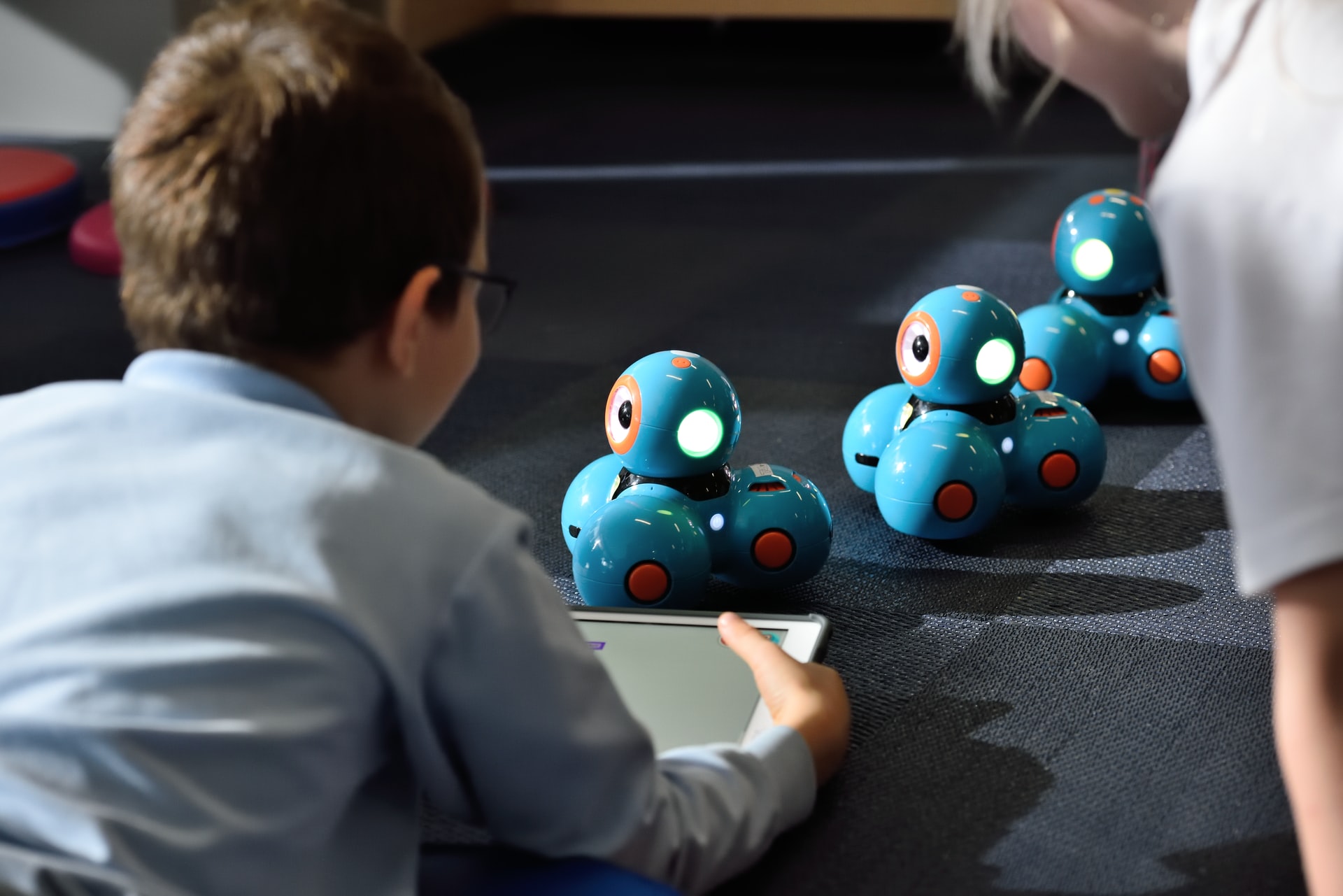By Dmitry Krasovskiy, Ph.D., Head of Education and Learning Services, EPAM Systems, Inc.
 Image source: https://unsplash.com/
Image source: https://unsplash.com/
Here’s how edtech providers can buoy educators’ efforts to teach tomorrow’s inventors to embrace the future through robotics.
In the past decade, robotics have evolved from a sci-fi fantasy set in some distant future to an industry capable of producing present-tense toys, companions, workers and self-driving cars. And this is just the beginning. The industry forecast calls for a compound annual growth rate (CAGR) of around 26 percent, which would mean a value of $210 billion by 2025.
The inventors (and users) of tomorrow are children sitting in preK-12 classrooms right now, who by and large are not learning about robotics. This represents a huge opportunity for education technology companies. Robots promise to become a bigger part of our daily lives as the industry shifts from being primarily industrial-driven to increasingly consumer-oriented. As they expand beyond the warehouse to wherever we need them, robots will become more diverse, intuitive and useful.
The speed of change has been impressive in recent years and will only accelerate as machine learning and neural networks endow robots with human-like senses, allowing them to “see” and even “taste” like we do. The skills children learn through robotics could certainly lead to career opportunities later, but that’s not the only reason to embrace the ABCs of androids. In addition to a range of science and math skills, students can practice problem-solving and creativity as well. We’ve arrived at a tipping point in robotics, and for education, that represents lifelong learning opportunities.
Here’s what edtech companies can do to prepare, in terms of both product and platform, for the future needs of today’s students.
1. Grow with students
There are a handful of companies creating strong educational tools in robotics for children, but they mostly target a particular age or stage. What if a robot (or set of robots) could advance as a student does? There is already a spectrum of teaching tools from various companies offering children of different ages the ability to learn about robotics (primarily coding), but how much more powerful would it be if a tool advanced organically with the student as they moved from preschool to high school and potentially even beyond? Just as coding lessons became more advanced, so too could other components of robotics such as engineering, electronics and, eventually, artificial intelligence. The pandemic took an eraser to the chalk line between home and school, so there’s no reason teaching technology shouldn’t follow this trend. Flexibility is key so students can learn at their own pace, when and where they want, for as long as they want.
2. Ignore boundaries
Robots are already being used for social-emotional learning and special education. With this in mind, it’s not far-fetched to imagine they could be employed to help with a wide range of subjects, and the potential can be whatever companies can imagine. Perhaps robots will one day soon “listen” to children read and help pinpoint reading challenges or deliver personalized music lessons for students that have advanced beyond others in their class.
3. Don’t forget mentors
Educators can get intimidated by robotics, but it doesn’t have to be that way. Smart solutions consider teachers and parents alongside students. Prospective teachers or guides must be able to access content and progress in a user-friendly way to provide the educational scaffolding needed for success.
The pandemic created an opening for more technology in the classroom. Teachers were forced to embrace all things digital, and there’s no going back. Likewise, parents became more involved in their children’s education during the pandemic as they facilitated virtual schooling or looked for supplemental online resources to combat learning loss. The users are not just students of all ages but also parents, teachers, tutors, and any other educators that support students.
4. Think holistically
Education is changing faster than ever before. Pre-pandemic, educators were already engaged in rethinking not just what we teach but how we teach, and then 2020 brought a whole new perspective to both.
That means there is an opening for Edtech companies with the right set of skills to help guide the future of education—a future that understands the growing role of robotics. To address the needs, businesses must combine expertise in content, platform engineering, and user experience design.
In other words, companies must consider not only how and when to deliver the right content at the right age or grade level, but also how to make the technology work seamlessly for every category of user, including students, educators, and parents, as they all progress toward the future. Accessibility and security are prerequisites.
Robots have gotten a bad rap. The mere mention of anything automated brings fears of either our replacement or ultimate demise (see any of the six “Terminator” films). But artificial intelligence and machine learning are, of course, entirely human creations with nearly unlimited power to make our lives better. They’ve already taken on tasks that are dangerous for people and have been developed to help our aging population stay in their homes longer. Rather than worrying about some dystopian future, it makes more sense practically to prepare for a world where people work with robots, in almost every industry and across so many facets of their lives, from school through retirement.
Anyone can learn to build something innovative if given the right tools. Edtech companies have an important opportunity to advance a field that sits at the intersection of so many valuable STEM concepts and offers so much versatility. Robotics represents an engaging, hands-on way to prepare today’s students to become tomorrow’s creators and agile digital citizens.
Learn more about Robotics with RobotLAB!

For over a decade, RobotLAB is leading the Educational Robotics market with an innovative approach that makes Robotics and VR truly useful in the hands of educators. Our passionate team will guide you from point A to Z and beyond.


